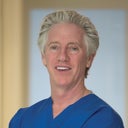Posted underFacelift q&a
How should I care for behind ear incisions after face and neck lift? They feel itchy and irritated.
Just a little over two weeks post opt, very itchy and irritated feeling? Using perioxide and antibiotic ointment 2 times a day.
Answers (21)
From board-certified doctors and trusted medical professionals

Dr. John J. Martin, Jr., MD
Oculoplastic Surgeon, Board Certified in Ophthalmology
Answer

Dr. Julian De Silva, MD
Oculoplastic Surgeon, Specialist Registered in Ophthalmology
Answer
More Facelift Questions
See all Facelift Q&AWE SEND PRETTY
EMAILS
What’s trending? Who’s turning heads? Which TikTok myths need busting? We’ve got you. No fluff, no gatekeeping—just real talk. Get our free, unfiltered newsletter.






